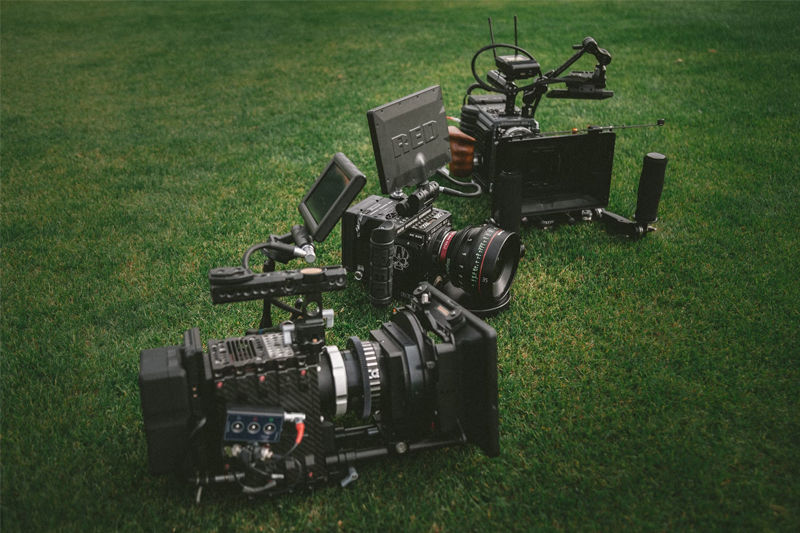Mastering Multi-Camera Setups for Customized Streaming Experiences While Navigating Legal Challenges
In the realm of live streaming, particularly for events like weddings, funerals, or corporate gatherings, managing multiple cameras and angles is crucial for delivering a polished and professional broadcast. However, handling various cameras simultaneously can be challenging, especially when aiming to capture dynamic and engaging content.

Managing Multiple Cameras and Angles Simultaneously
Utilize PTZ Cameras and Controllers:
Incorporate Custom Graphics and Overlays:
Obtain Consent Forms:
- PTZ (Pan, Tilt, Zoom) cameras allow you to control multiple angles from a single location. With a joystick controller or software interface, you can easily switch between angles, zoom in or out, and capture the most important moments without needing multiple camera operators.
- Invest in automation tools that allow pre-programmed camera movements and angle switching, reducing the stress of manual control during live streaming.
- Software like OBS, Wirecast, or vMix enables seamless switching between multiple camera feeds. These platforms often include features that allow for picture-in-picture views, split screens, and other effects to enhance the viewer's experience.
- Practice switching between cameras and angles before the event to ensure a smooth flow during the live stream. Familiarize yourself with the software's shortcuts and functionalities to reduce the risk of mistakes during the broadcast.
- If possible, have a dedicated team member responsible for each camera or a specific set of cameras. This division of labor ensures that each angle is monitored closely and adjustments are made as needed, ensuring a professional broadcast.
- Conduct a rehearsal with your team to coordinate timing and transitions, ensuring everyone is on the same page.
Offering Unique, Customized Streaming Experiences
Clients increasingly seek unique and tailored streaming experiences to distinguish their events from others. Customization is not only a value add but also a significant factor in building client satisfaction and loyalty.Incorporate Custom Graphics and Overlays:
- Personalized graphics, lower thirds, and branding overlays can enhance the professionalism of the stream. Include elements like the couple's names at a wedding or the company logo during corporate events.
- Use software like Adobe After Effects or Canva to design these graphics and integrate them seamlessly into your live stream.
- Consider offering your clients various viewing formats, such as a standard stream, a highlight reel, and a behind-the-scenes perspective. Different viewing angles and formats can create a more immersive and memorable experience for the audience.
- Provide clients with a post-event edited video that includes the best angles and moments, ensuring that they have a high-quality keepsake of the event.
- Integrate live polls, chat functions, or Q&A sessions into the stream to engage the audience in real-time. This interaction can make the event more dynamic and keep viewers invested.
- For weddings or funerals, consider adding a digital guestbook or a space for virtual attendees to leave messages and memories.
Navigating Legal Issues Related to Privacy and Copyright
As the demand for live streaming services grows, so do the legal complexities surrounding privacy and copyright. Understanding these legal issues and how to navigate them is essential to protect both your business and your clients.Obtain Consent Forms:
- Always secure written consent from everyone who will appear on camera, especially in private events like weddings or funerals. This consent should cover the live broadcast as well as any recorded footage that may be used for promotional purposes.
- Ensure that any minors involved have consent forms signed by their guardians, as additional privacy considerations apply.
- Be mindful of the music, imagery, and content you include in your streams. Using copyrighted material without permission can lead to legal challenges. Instead, opt for royalty-free music or obtain the necessary licenses to use specific tracks.
- Familiarize yourself with platforms like YouTube or Facebook's copyright policies, as they have specific rules and algorithms to detect unauthorized content. Violations could result in the stream being taken down or your account being flagged.
- With the rise of live streaming, there’s an increased focus on data privacy. Ensure your streaming platform complies with relevant privacy regulations (such as GDPR if you're streaming internationally).
- Safeguard any personal information collected during the event (such as email addresses for sending out stream links) and avoid sharing sensitive information without consent.
.png)